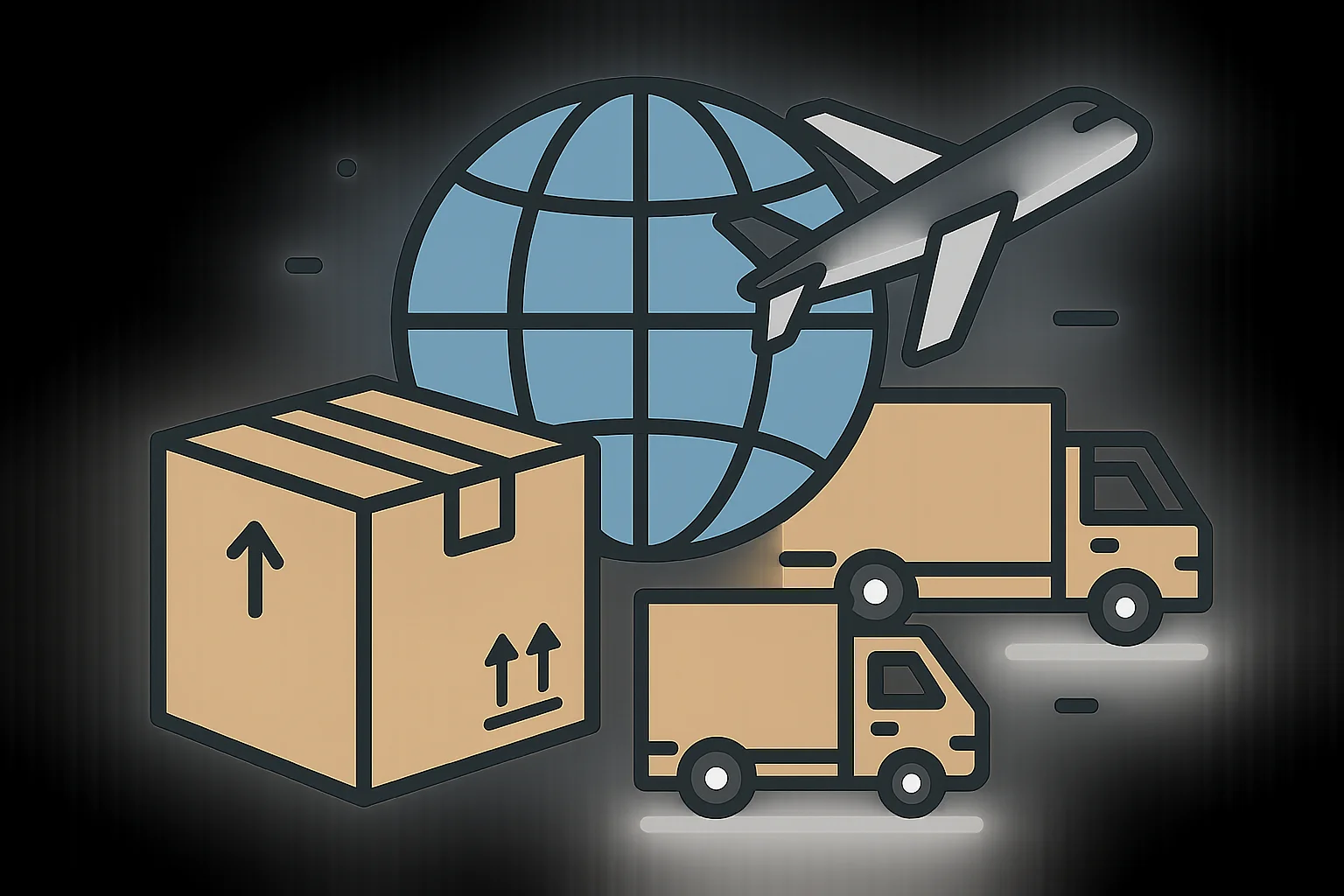Shipping boxes internationally involves a series of critical steps, from selecting the right carrier to completing customs forms. Proper planning and execution can help you avoid delays, unexpected fees, and lost shipments. This guide breaks down the process into detailed stages: preparing your shipment, choosing a carrier, handling customs and documentation, understanding costs and insurance, tracking and delivery, and tips to ensure a smooth experience.
1. Preparing Your Shipment
1.1 Selecting the Right Box and Materials
- Choose a sturdy, double-walled corrugated cardboard box appropriate for the weight and size of your contents.
- Ensure the box is in new or like-new condition-reusing damaged boxes increases risk of failure.
- Gather cushioning materials: bubble wrap, foam sheets, packing peanuts, or air pillows. Use at least 2 inches of cushioning on all sides.
- Have heavy-duty packing tape (2-inch width, weather-resistant) and a box cutter or scissors ready.
1.2 Packing Items Securely
- Wrap fragile items individually in bubble wrap or foam, securing with tape.
- Place heavier items at the bottom of the box and lighter items on top.
- Fill voids with packing peanuts or crumpled paper to prevent movement.
- Do not exceed the carrier’s weight limit (often 70-150 pounds for international shipments).
- Seal the box using the H-taping method: tape along the seam, then across the flaps’ edges.
1.3 Labeling and Addressing
- Print clear sender and recipient addresses on a shipping label. Include full name, street address, city, postal code, and country.
- Add contact phone numbers and email addresses in case the carrier encounters issues.
- Include a duplicate address label inside the box in case the outer label is damaged.
2. Choosing an International Shipping Carrier
2.1 Major Carriers and Services
- USPS (United States Postal Service) – Global Priority and First-Class options; more economical for small, lightweight parcels. – Offers built-in customs form generation and delivery to over 180 countries.
- FedEx – International Economy and International Priority services. – Faster transit times (2–5 business days for Priority), higher reliability, but at a premium.
- UPS – Worldwide Expedited and Worldwide Saver services. – Competitive pricing for heavier shipments; strong tracking and claims processes.
- DHL Express – Renowned for express international service, often the fastest worldwide (1–3 business days). – Higher fees for remote areas; excellent global coverage.
2.2 Comparing Transit Times and Costs
- Economy services cost less but take longer (7–21 business days), suitable for non-urgent items.
- Express services cost more but guarantee delivery within 1–5 business days.
- Obtain rate quotes online by entering package weight, dimensions, origin, and destination.
- Consider volume discounts if shipping multiple boxes or using a business account.
3. Customs Regulations and Documentation
3.1 Understanding Customs Requirements
- Every international shipment must clear customs in the destination country.
- Customs authorities assess duties and taxes based on declared value, product type, and country rules.
3.2 Completing Customs Forms
- CN22 (for USPS First-Class items under $400) or CN23 (for larger declarations).
- Commercial Invoice: required for most carriers, listing item descriptions, values, quantities, and Harmonized System (HS) codes.
- Pro forma Invoice: for non-commercial shipments (gifts, samples).
- Export Declarations: may be necessary for high-value goods (over $2,500 in the U.S.) via the AES (Automated Export System).
3.3 Classifying Goods with HS Codes
- HS codes are six-digit numbers that classify traded products globally.
- Accurate classification avoids delays or fines; use national customs websites or carrier tools to identify codes.
3.4 Valuation and Duties
- Declared value for customs should reflect the transaction value (what the recipient paid).
- Gifts and samples may qualify for reduced duties but must be labelled and valued correctly.
- Recipient typically pays duties and taxes upon delivery unless you arrange DDP (Delivered Duty Paid) service.
4. Calculating Costs and Insurance
4.1 Shipping and Dimensional Weight
- Most carriers charge on dimensional weight (DIM)-calculated as (Length × Width × Height) / DIM factor.
- Compare actual versus DIM weight; carriers bill whichever is higher.
- DIM factors vary (e.g., 166 for inches in USPS, 139 or 5000 for FedEx and UPS).
4.2 Duties, Taxes, and Brokerage Fees
- Duties vary by product type and country; typically 0–25% of declared value.
- Value-Added Tax (VAT) or Goods and Services Tax (GST) may apply on import.
- Carriers may charge brokerage or clearance fees (often $8–$75).
- To estimate total landed cost, use online landed-cost calculators offered by carriers or third-party services.
4.3 Insurance Coverage
- Carriers often include limited liability (e.g., $100 for USPS, $100 for FedEx).
- Purchase additional insurance for high-value items, typically $1.50–$3 per $100 of declared value.
- Third-party insurers may offer lower rates or higher coverage for fragile goods.
5. Scheduling Pickup or Drop-Off
5.1 Carrier Pickup Services
- Schedule pickups online or by phone; some carriers charge a fee (e.g., $4.95 for USPS).
- Ensure parcels are ready and accessible by the agreed pickup time.
5.2 Drop-Off Locations
- Find authorized retail locations, drop boxes, or regional hubs.
- For bulky or heavy shipments, dropping off at a staffed center avoids package jams in automated kiosks.
6. Tracking and Delivery
6.1 Tracking Numbers
- Upon shipment, you receive a tracking number (e.g., “9400” for USPS, “1Z” for UPS, 12-digit for FedEx).
- Use the carrier’s website or mobile app to monitor status: acceptance, in-transit scans, arrival at customs, out for delivery.
6.2 Delivery Options
- Standard delivery: doorstep or desk delivery; recipient may need to sign.
- Signature required: adds security but may delay if recipient unavailable.
- Hold-for-pickup: recipient collects at a local facility.
6.3 Handling Delays and Claims
- Track customs clearance status; delays often occur at customs due to documentation issues or inspections.
- If lost or damaged, file a claim with the carrier within stated timeframes (e.g., 60 days for USPS First-Class international).
- Provide proof of value, packing photos, and tracking history to support claims.
7. Special Considerations
7.1 Restricted and Prohibited Items
- Consult both origin and destination country restrictions. Common prohibited items include explosives, certain chemicals, perishables, and counterfeit goods.
- Restricted items (e.g., lithium batteries, alcohol, pharmaceuticals) may require special permits or packaging.
- Review the carrier’s prohibited items list and the destination country’s customs authority website.
7.2 Shipping Lithium and Batteries
- Lithium metal and ion batteries pose fire risks and are regulated under IATA and ICAO for air transport.
- Use UN-approved packaging, include “Lithium ion batteries in compliance with Section II of PI967” label, and complete a Shipper’s Declaration if required.
7.3 Temperature-Sensitive and Perishable Goods
- Use insulated boxes, gel packs, or dry ice.
- Mark “Perishable” and “Keep Refrigerated” or “Dry Ice” as applicable.
- Coordinate expedited services to minimize transit time.
7.4 Returns and Reverse Logistics
- Include a return shipping label and instructions for recipients.
- Consider prepaid return services that allow recipients to drop off packages without payment.
8. Best Practices and Tips
- Plan ahead: International shipping can take 1–4 weeks depending on service level and customs processes.
- Communicate with recipients: Inform them of tracking details, expected delivery window, and potential duties.
- Consolidate shipments: Group multiple items into one box to save on per-package fees.
- Negotiate commercial rates: Businesses can secure discounted rates by shipping in volume or through freight forwarders.
- Use freight forwarders for bulky cargo: For large shipments (>150 pounds or palletized goods), consider sea freight or air cargo services via an NVOCC (Non-Vessel Operating Common Carrier).
- Keep accurate records: Retain copies of all shipping labels, invoices, and customs forms for at least one year.
By following these detailed steps-selecting proper packaging, choosing the right carrier, completing customs documentation accurately, calculating true costs, and leveraging tracking and insurance-you can ship boxes internationally with confidence and minimize delays, unexpected charges, or damage. Proper planning and adherence to carrier and customs regulations are key to a smooth shipping experience.



Leave a Reply